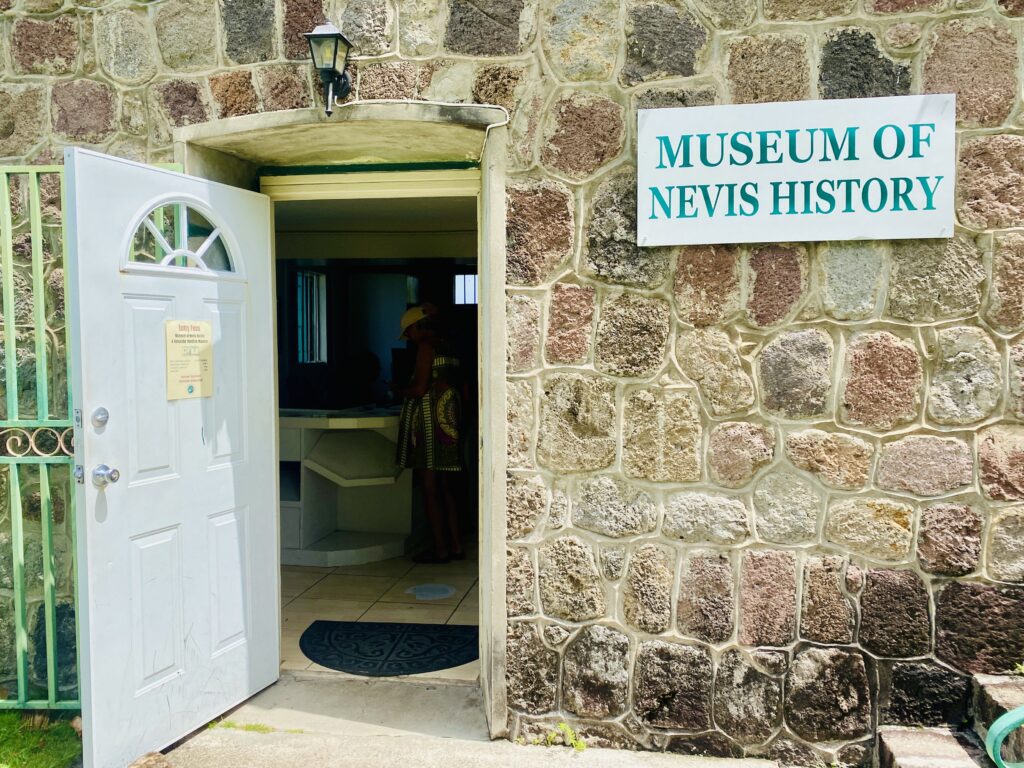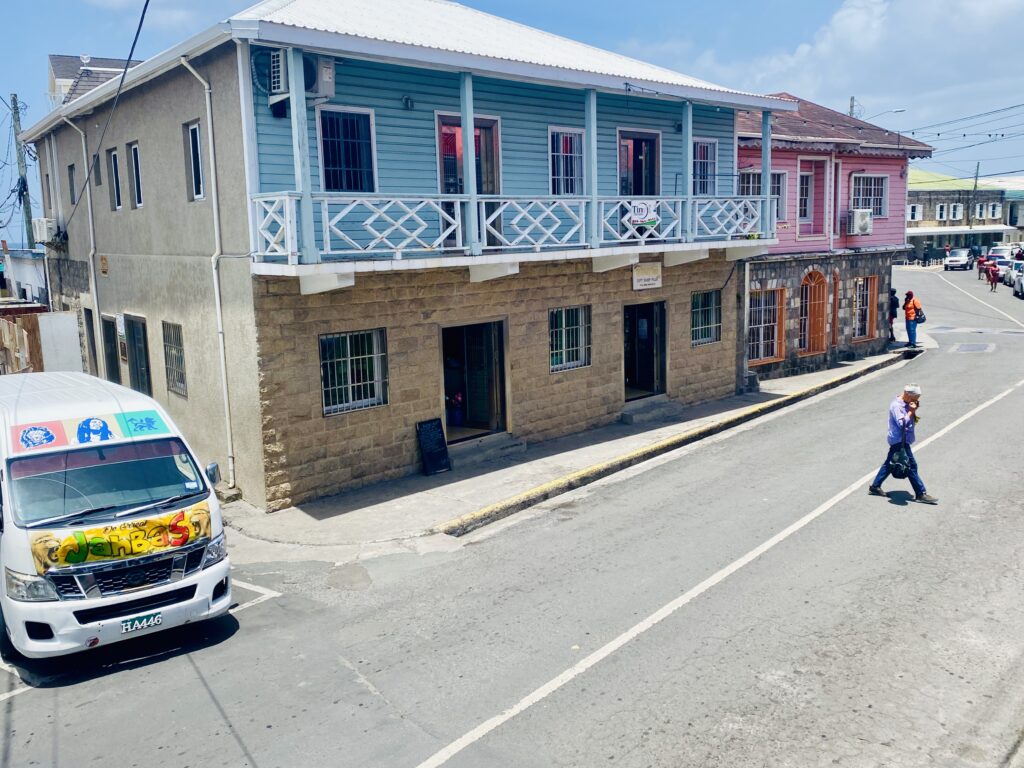Charlestown is the capital of Nevis. It is located on the southwest, and leeward side side of the island overlooking the Caribbean Sea. It is the chief town and main port on Nevis, so it was logical that we would start our tour there.


I was surprised to learn the importance this town once had in history. Like Jamestown, Charlestown was a major settlement in the 1680’s, and was inundated with pioneers. I was fascinated to learn that the islands of St. Kitts and Nevis are the Caribbean’s oldest colonized territories, with Charlestown being the biggest early settlement. This an ideal spot for history lovers, so that’s where our tour began.
We walked along Main Street on the waterfront and toured the Hamilton House and the small, but informative Museum of Nevis History. There we learned about the island and it’s most famous inhabitants, Alexander Hamilton and Horatio Nelson. Alexander Hamilton, U.S. Secretary, statesman, and a framer of the U.S. Constitution was born in Charlestown, out of wedlock. His father abandoned the family when he was a young boy, leading him to become a clerk in town. When his mother died in 1768, he became a ward of his relatives, who raised him on St. Croix island, then later sent him to New York to be educated. What a surprising background for such an influence man. We did not visit the the nearby ruins of Montpelier Estate where the British naval hero Horatio Nelson was married, but it’s another historical feature of the island that is preserved for those history buffs.












We took a walk down Charlestown’s charming narrow streets, lined with colorfully-painted 18th- and 19th-century Victorian and Georgian-style buildings. The streets are mostly clean with manicured landscaping, tropical vegetation, and plazas for people to gather.
We walked by the Old Bath House which is believed to be one of the town’s first hotels, saw several churches, historic buildings, and shops, before stopping for lunch at a Chinese restaurant located up a flight of stairs. We hadn’t had Chinese food in so long; surprisingly, it was great! The population of Nevis is largely black, with a small group of mulattos (a mix of African and white heritage), caucasians, and South Asians, so we weren’t too surprised to find a few Chinese restaurants.











We also visited the Nevis Jewish Cemetery at the corner of Government and Jew Street in what was formerly Charlestown’s Jewish neighborhood. The headstones in this cemetery date back to the late 17th century, and are a reminder of the once-thriving Jewish community that lived on Nevis. Some of this Jewish population came from Brazil after being thrust out of the country by the Portuguese, while the others came from Barbados. Only a few handfuls of tombstones remain, but viewing the inscriptions, written in English, Hebrew, and Portuguese, left us with a cherished reminder of their life and legacy.









The town of Charleston was a naval base in the late 18th century, as well as a resort known for its rich mineral waters and hot springs. Sadly, the town was almost totally destroyed by fire in 1873, creating a dispersion of the population. Up until 2005, the main industry on Nevis was sugar milling. Today, tourism is its primary business, with the production of coconuts and other produce as well.
When we went back to the dock at the end of our daytime tour, we met a warm-hearted fisherman casting his net. After we asked what he was doing, he was eager to show us his technique. What beautiful waters and beautiful people!
We really enjoyed our tour of Charlestown. There is so much history there! The Nevisians are very friendly, and the city is beautiful with its brightly painted buildings and plazas, lush tropical vegetation, beaches, hot springs, and mountainous backdrop. Goats and sheep roam freely, and mango, avocado, breadfruit, and coconut palms dot the landscape, giving the town a rural feel. It is a quiet and peaceful place, and we understand why the locals love their little home! What a delightful place to visit!
